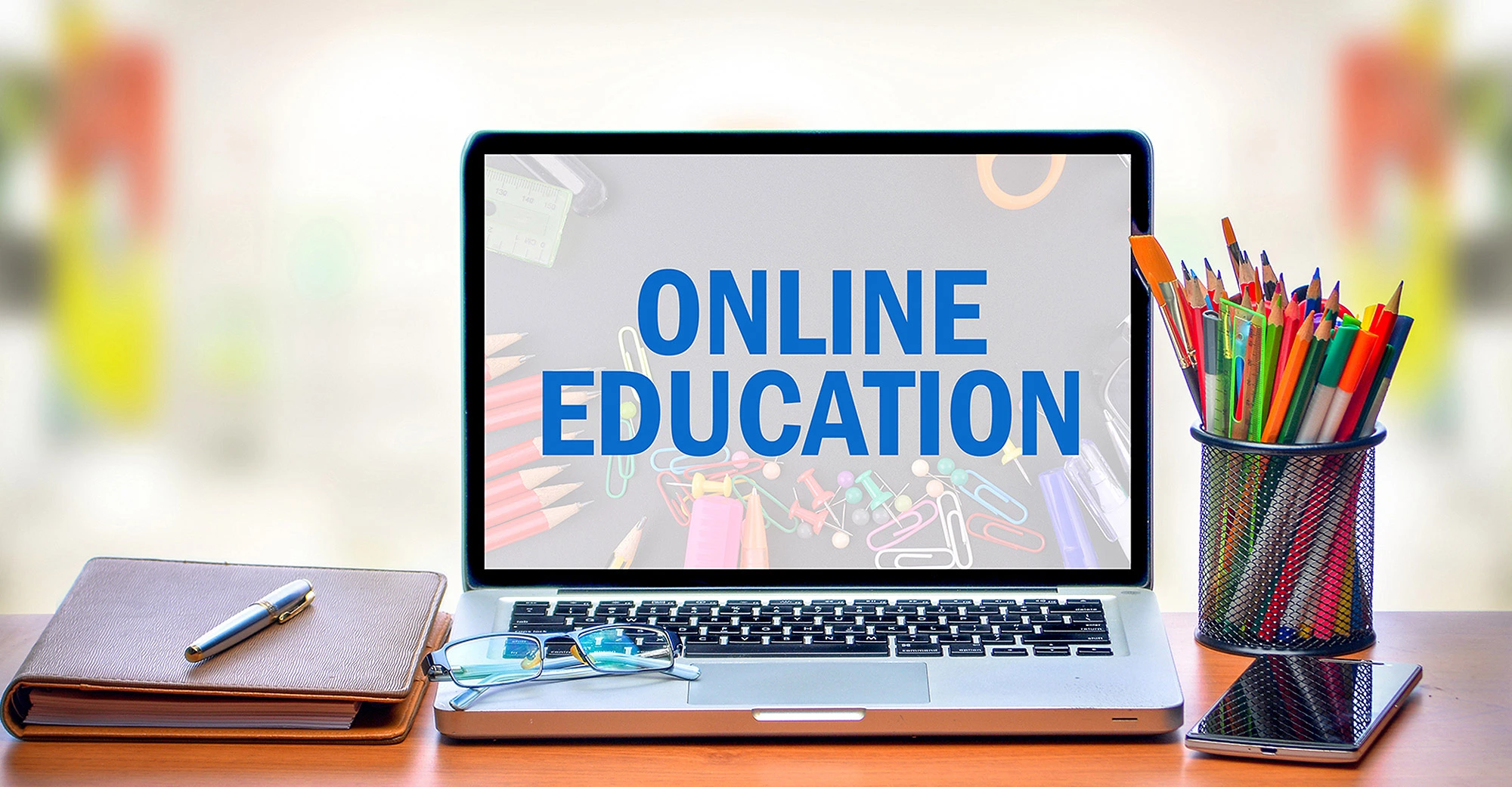Assessing Skills Development Solutions for SME Success in South Africa
Explore the impact and effectiveness of skills development initiatives tailored for SMEs in South Africa. Learn how these solutions contribute to business growth and economic empowerment.
Elevate your organisation's learning and development initiatives by implementing a strategic evaluation approach. Clearly defining measurable objectives aligned with business goals ensures a targeted assessment of the interventions' impact.
The Significance of Evaluating Learning and Development Interventions for SMEs
Evaluating learning and development interventions is critical for small and medium enterprises (SMEs) to thrive. By assessing the effectiveness of training programs, SMEs can optimize resources, enhance employee skills, and drive organizational growth. This process enables SMEs to identify areas for improvement, tailor training initiatives to specific needs, and ensure a high return on investment. Through strategic evaluation, SMEs can foster a culture of continuous learning, empower their workforce, and remain competitive in dynamic markets. Discover the transformative impact of evaluating learning and development interventions on SME success.
Learning and Development Considerations
- When evaluating learning and development interventions, businesses should adopt a comprehensive and strategic approach to measure their effectiveness and impact. Firstly, it's crucial to establish clear and measurable objectives aligned with organisational goals. This involves defining specific performance indicators and desired outcomes that the interventions aim to achieve. By having well-defined metrics, businesses can assess the success of the learning programs in terms of improved skills, knowledge transfer, and overall performance. Regularly reviewing these objectives allows for ongoing adjustments to the interventions, ensuring they remain relevant and contribute meaningfully to the organisation's growth.
- Secondly, businesses should employ a mix of quantitative and qualitative assessment methods to gain a holistic understanding of the interventions' outcomes. Utilising quantitative data, such as performance metrics and completion rates, provides a numerical basis for evaluation. Additionally, qualitative feedback through surveys, interviews, or focus group discussions helps capture the subjective experiences and perceptions of participants. This dual approach not only provides a more nuanced evaluation but also allows businesses to identify areas of improvement and success stories. Continuous monitoring and evaluation create a feedback loop that supports the refinement and optimisation of learning and development interventions, ultimately contributing to a more effective and impactful workforce development strategy.
Evaluate learning and development interventions

Written by: Malose Makgeta
MBA with 20+ years experience in SME development and material. LinkedIn Profile
Learning and Development - Entrepreneurship Lessons from Movies The Founder, War Dogs and Moneyball
- The Founder (McDonald's): Assessing the effectiveness of learning and development interventions is a critical aspect of organisational growth and employee advancement. The evaluation process involves examining the impact of various educational initiatives on individual and collective performance within a company. It requires a comprehensive analysis of how these interventions align with organisational goals, enhance skills, and contribute to overall productivity. Evaluating learning and development interventions also entails measuring the transfer of knowledge into practical application, gauging employee satisfaction and engagement levels, and considering the long-term impact on professional development. Employing a mix of quantitative and qualitative metrics, such as performance metrics, employee feedback, and skill acquisition, enables organisations to make informed decisions about the efficiency of their learning programs. Continuous evaluation allows for adjustments and improvements, ensuring that learning and development initiatives remain aligned with the ever-evolving needs of both the workforce and the organisation.
- War Dogs (AEY): War Dogs (AEY) exhibited a commitment to continuous improvement by diligently evaluating the efficacy of their learning and development interventions. Understanding that the landscape of government contracting and arms dealing demanded constant adaptation, the organisation regularly assessed the impact of their training programs. This evaluation process encompassed a range of metrics, including the acquisition of new skills, employee performance in real-world scenarios, and the overall effectiveness of the learning initiatives. By gauging the outcomes and feedback from participants, War Dogs could refine and tailor their interventions, ensuring that the learning experiences remained relevant and impactful. This commitment to evaluation reflected a strategic approach to organisational growth, demonstrating a keen awareness of the need to evolve in tandem with the dynamic demands of their industry. Through this iterative process, War Dogs not only honed the skills of their workforce but also maintained a competitive edge by staying ahead of industry trends and challenges.
- Moneyball (Oakland A's): Billy Beane built a successful team without a traditional business plan; instead, he made decisions as he went along and eventually stumbled upon Peter Brand, who believed in the predictive analytics system. This approach led the Oakland A's to a 20-game winning streak, breaking records in American baseball history.
- Explore further insights on business plan development lessons derived from our case study movies: The Founder, War Dogs and Moneyball by clicking here.
CONTEXT
Learning and development (L&D) is a function within an organisation that is in charge of empowering employees growth as well as developing their knowledge, skills, and capabilities in order to drive better business performance. The term learning and development refers to any professional development provided by a business to its employees. This skills programme provides a platform and tools for entrepreneurs and business managers to conduct skills audits, identify skill gaps, and develop fundable training plans.
Description
The module is about evaluation of learning programmes or courses, whether internally or externally.
Purpose
Be able to plan, prepare, and complete an evaluation of a learning intervention to determine the effectiveness of the learning and whether performance and business objectives were met.
Rational
Evaluation is the systematic process of gathering and analysing data and other objective information to determine the quality, value and effectiveness of a learning intervention within the context of the organisational setting with the specific aim of initiating certain actions.
Key Lessons
Click here and draft your business plan in minutes
To request tailored accredited training and enterprise development services, contact us at businessplan@superdealmaker.com.
Get List for material Opportunities in Minutes, Click Here
To request tailored investment banking services, contact us at businessplan@superdealmaker.com.
What is Evaluate Learning and Development Interventions
When it comes to learning and development interventions, evaluation plays a crucial role in determining their effectiveness and impact. Evaluation involves assessing the outcomes and benefits of these interventions to ensure they meet the desired goals and objectives.
The evaluation process typically involves collecting and analysing data to measure the extent to which the interventions have achieved their intended outcomes. This can be done through various methods such as surveys, assessments, interviews, and observations.
By evaluating learning and development interventions, organisations can gain insights into their effectiveness and identify areas for improvement. It allows them to make informed decisions about future interventions, allocate resources efficiently, and enhance the overall learning experience for employees.
Furthermore, evaluation helps to determine the return on investment (ROI) of learning and development initiatives. It provides organisations with tangible evidence of the impact of these interventions on employee performance, productivity, and job satisfaction.
Overall, evaluating learning and development interventions is essential for organisations to ensure that their investment in employee training and development is yielding positive results. It helps them make data-driven decisions, improve their training programs, and ultimately contribute to the growth and success of the organisation.
Why Evaluate Learning and Development Interventions
There are several reasons why it is important to evaluate learning and development interventions:
1. Assess effectiveness: Evaluation helps to determine whether the learning and development interventions are achieving their intended outcomes and goals. It provides insights into the effectiveness of the programs and helps identify areas for improvement.
2. Measure impact: By evaluating interventions, organisations can measure the impact of training and development on employee performance, productivity, and job satisfaction. It helps to determine whether the interventions are leading to positive changes in these areas.
3. Identify strengths and weaknesses: Evaluation allows organisations to identify the strengths and weaknesses of their learning and development initiatives. It helps to determine what aspects of the interventions are working well and where there may be gaps or areas for improvement.
4. Inform decision-making: Evaluation provides organisations with data and evidence to make informed decisions about future interventions. It helps in determining which programs or approaches are most effective and where resources should be allocated for maximum impact.
5. Demonstrate ROI: Evaluation helps organisations demonstrate the return on investment (ROI) of their learning and development initiatives. It provides tangible evidence of the value and impact of these interventions, which can be important for justifying the investment to stakeholders.
6. Enhance accountability: Evaluation promotes accountability by holding organisations responsible for the outcomes of their learning and development efforts. It helps to ensure that resources are used effectively and that interventions are aligned with organisational goals.
Overall, evaluating learning and development interventions is essential for organisations to continuously improve their training programs, measure their impact, and make informed decisions about future initiatives.
When to Evaluate Learning and Development Interventions
Evaluating learning and development interventions should be conducted at various stages throughout the process:
1. Pre-implementation evaluation: Before implementing a learning and development intervention, evaluation can help assess the organisation's needs, identify specific learning objectives, and determine the most appropriate intervention methods. This evaluation ensures that the intervention aligns with the organisation's goals and addresses the targeted areas effectively.
2. During implementation evaluation: Ongoing evaluation during the implementation phase helps monitor the progress of the intervention. It allows organisations to assess whether the intervention is being delivered as planned, whether participants are actively engaged, and whether any adjustments are needed to enhance effectiveness.
3. Post-implementation evaluation: After the completion of the intervention, a comprehensive evaluation should be conducted to assess its overall impact. This evaluation examines whether the intended outcomes and goals have been achieved, whether participants have acquired the desired knowledge and skills, and whether there have been any changes in performance or behavior as a result of the intervention.
4. Long-term evaluation: Learning and development interventions should be evaluated over the long term to assess their sustainability and long-lasting effects. This evaluation helps determine whether the acquired knowledge and skills are retained and applied over time and whether the intervention has had a lasting impact on employee performance and organisational outcomes.
5. Continuous evaluation: Evaluation should not be a one-time event but an ongoing process. Continuous evaluation allows organisations to monitor the effectiveness and relevance of their learning and development initiatives over time. It helps identify emerging needs, evaluate the impact of any adjustments or modifications made to the interventions, and ensure that the programs remain aligned with organisational goals.
By conducting evaluations at these different stages, organisations can gather valuable data and insights to improve their learning and development interventions, measure their effectiveness, and make informed decisions about future initiatives.
Unlocking Learning and Development at McDonald's: A Story of Inclusivity and Growth
Picture this: Ray Kroc, the visionary behind McDonald's, navigating the complexities of learning and development with the vulnerability of a novice chef attempting his first flip of the iconic golden arches. In the world of burgers and fries, even the seasoned players must embrace a learning curve. Now, let's step into the world of McDonald's and dissect how they crafted a culture of inclusivity through their learning and development interventions.
The McDonald's Way: A Collective Journey in Learning
In the hustle of the fast-food industry, McDonald's fostered an inclusive atmosphere by championing the learning journey of every employee. The story unfolds with the McDonald brothers, Dick and Mac, pioneering the 'Speedee Service System.' This system, now a cornerstone of McDonald's success, exemplifies the commitment to efficiency and inclusivity. It wasn't just about flipping burgers; it was about flipping the script on traditional business norms. Every employee, from the grill to the counter, played a pivotal role in the collective learning journey.
Practical Tips from the McDonald's Manual: Addressing Learning Challenges
The fries may be crispy, but learning curves can be daunting. McDonald's addressed this by simplifying training materials, ensuring accessibility for all employees. The practical tip? Break down complex concepts into bite-sized nuggets. By incorporating relatable anecdotes into training, like the tale of Ray Kroc's early struggles, they turned challenges into opportunities for growth. Humor wasn't just a side order; it was a key ingredient in making learning enjoyable and memorable.
Passion and Skill Alignment Under the Golden Arches
McDonald's, in its pursuit of inclusivity, recognised the importance of aligning passion with skills. Ray Kroc's journey from a Multimixer milkshake machine salesman to the visionary leader of McDonald's exemplifies this alignment. This lesson extends beyond the boardroom - it's about recognising and nurturing the unique talents and passions of each employee. By doing so, McDonald's ensured that every flip of the spatula was a manifestation of passion and skill, creating a symphony of flavors under the golden arches.
Flip it with Finesse: Navigating Learning Challenges
So, what can entrepreneurs glean from McDonald's approach to learning and development? Embrace vulnerability, champion inclusivity, and infuse a dash of humor into the learning journey. In the ever-evolving landscape of business, it's not just about flipping burgers; it's about flipping challenges into opportunities. McDonald's teaches us that under the golden arches, every entrepreneur can craft a narrative of inclusivity, turning each learning curve into a golden opportunity for growth.
How to Evaluate learning and development interventions
When evaluating learning and development interventions, the following steps can be followed:
- Establish clear evaluation objectives: Define the specific goals and objectives of the evaluation. Determine what aspects of the intervention will be assessed and what data needs to be collected.
- Select appropriate evaluation methods: Choose evaluation methods that align with the objectives and provide reliable and valid data. This can include surveys, interviews, observations, assessments, performance metrics, and feedback mechanisms.
- Collect data: Implement the chosen evaluation methods to collect relevant data. Ensure that data collection processes are well-structured, consistent, and consider participant confidentiality.
- Analyze data: Analyze the collected data using appropriate statistical and qualitative analysis techniques. Look for patterns, trends, and significant findings that provide insights into the effectiveness and impact of the intervention.
- Interpret results: Interpret the analysed data to draw meaningful conclusions. Identify strengths, weaknesses, successes, and areas for improvement based on the evaluation findings.
- Make data-driven decisions: Use the evaluation results to make informed decisions about the learning and development interventions. Determine necessary adjustments or modifications to enhance effectiveness and address identified gaps.
- Communicate findings: Share the evaluation findings with relevant stakeholders, such as management, trainers, and participants. Present the results in a clear and concise manner, highlighting key insights and recommendations.
- Implement improvements: Based on the evaluation findings, implement the recommended improvements and changes to enhance the intervention's effectiveness and impact.
- Monitor and iterate: Continuously monitor the intervention's progress and impact over time. Conduct regular evaluations to track changes, measure long-term effects, and inform future iterations of the learning and development interventions.
By following these steps, organisations can conduct thorough and systematic evaluations of their learning and development interventions, leading to improved outcomes and enhanced employee development.
Evaluating Learning's overall goal is to determine the effectiveness of the learning and whether performance and business objectives were met.
One of the desired outcomes of any evaluation process is improvement. In this context, it is preferable that the evaluation results be used to make changes to the learning process in order to improve learning effectiveness.
Learning effectiveness is assessed using a mix of standard and intervention-specific items. There are two basic items:
- Contribution to Learning: To what extent did the "learning activity" contribute to your course learning?
- Relative Effectiveness: How effective was the learning activity in comparison to other learning activities in the course?
Additional intervention-specific items may be developed to assess the effectiveness of specific aspects of the intervention on learning.
Process improvement items must be created based on the specific intervention being evaluated and should collect data on how to improve the intervention's effectiveness. This will typically include a mix of closed and open questions.
Learning evaluation can take many forms, including learner reaction surveys (also known as "smile sheets"), knowledge tests, skill demonstrations, comparisons of pre- and post learning performance, and ROI calculations.
Evaluating Learning is a continuous process that begins with assessing performance needs and continues with designing curricula and learning experiences, facilitating learning, and supporting learning transfer.
A comprehensive learning evaluation determines whether a learning solution has had an impact on business results. Business outcomes are typically assessed six to twelve months after the learning experience is implemented.
To determine whether the learning solution has had an impact on business results, first assess the extent to which the learning has had an impact on performance outcomes. Changes in performance outcomes are typically assessed a few weeks to several months after the learning experience is implemented.
You must assess whether learners have acquired the necessary skills and knowledge to ensure that participants are adequately prepared to apply their learning outside of the classroom. During the implementation of the learning experience, this should be assessed against specific learning objectives. You can assess the participants' reactions by having them evaluate their reactions during or immediately following the implementation of the learning experience.
Competent Evaluation
Competent evaluation of learning increases the likelihood you:
- Determine appropriate and realistic measures for each evaluation level.
- Create useful learning for participants and the organisations to which they belong.
- Gain a comprehensive understanding of changes that can improve future learning experiences.
Unlocking Potential: Evaluating Players' Learning and Development Interventions in Moneyball
In the cutthroat world of baseball, where tradition often overshadows innovation, Moneyball introduced a game-changing approach. Imagine challenging the norm and embracing vulnerability as Billy Beane did. His unconventional methods challenged the industry's deep-rooted beliefs, defining him not by conventional success but by the audacity to be different. Let's explore how inclusivity played a pivotal role in this transformative journey.
Inclusivity and Data-Driven Decisions
In the Moneyball saga, inclusivity wasn't just a buzzword; it was a strategy. Billy Beane and Peter Brand broke down barriers by focusing on data, not biases. They recognised that diversity in player statistics, much like diversity in people, could lead to more robust decision-making. By incorporating a wide range of player attributes, they created a more inclusive, data-driven strategy that challenged the status quo.
Light-Hearted Moments: A Laugh in the Face of Tradition
Picture the irony of traditional scouts dismissing players based on gut feelings while Billy Beane and Peter Brand, armed with data, made decisions that turned heads. In the face of skepticism, a bit of humor and a well-timed laugh became their allies. Moneyball teaches us that embracing innovation often involves a light-hearted attitude and the ability to find humor in the unconventional.
Passion and Skill Alignment: Crafting a Winning Formula
Billy Beane's passion for challenging norms and Peter Brand's analytical skills formed a dynamic duo. Moneyball illustrates that aligning entrepreneurial ventures with personal passion and skills is key to success. The story prompts us to consider how our own passions can be leveraged, aligning them with skills to create a winning formula in the game of business.
Breaking Barriers: Inclusive Strategies for Entrepreneurs
For entrepreneurs navigating uncharted territories, Moneyball provides valuable lessons. Break free from tradition, embrace inclusivity in decision-making, find humor in the unconventional, align passion with skills, and craft strategies that challenge the norm. Just as Beane and Brand transformed baseball, entrepreneurs can reshape industries with innovative and inclusive approaches.
Evaluate Participant Reactions
Mastering these competencies allows you to identify opportunities to improve the facilitation and design of the learning experience.
Create materials to assess participant reactions.
- Create gender-inclusive and culturally appropriate content.
- Determine the viability of various data collection methods, including digital data collection.
Assess Participant Reactions
- Gather and aggregate data to evaluate participant reactions.
- Recognise patterns and trends in participant responses.
- Determine factors other than learning that may influence participant reactions.
- Keep track of technological and logistical learnings.
- Determine how access to, or lack of access to, technology has aided or hampered learning.
- Evaluate the effectiveness of using female role models in programme registration, attendance, and active participation, as well as programme completion.
- Keep track of the participants' psycho-emotional learning requirements.
Recommend changes based on participant reactions
- Based on participant reactions, identify potential changes to design and facilitation.
- Determine the viability of the proposed changes.
- Make suggestions for changes to improve design and facilitation.
- Determine how to communicate responses to the programme and training, taking into account cultural and religious norms, political circumstances, and gender norms and behaviors.
Evaluate Learning Objectives
The impact of mastering these competencies is that you can:
- Determine whether participants, individually and collectively, have achieved the learning objectives.
- Where necessary, provide learning certification.
- Look for ways to improve the design and facilitation of the learning experience.
Design Evaluation of Learning Objectives
- Determine the viability of various data collection methods, including digital ones.
- Collect gender-disaggregated data in a culturally and gender-inclusive manner.
- If not all data can be collected during the learning experience, plan safe locations and transportation for post-programme data collection.
- Develop materials to evaluate learning objectives
- Assess individual achievement of learning objectives
Assess Aggregate Achievement of Learning Objectives
- Compile data on individual progress toward learning objectives.
- Analyze aggregate data on learning objective achievement.
- Recognise patterns and trends in learning objective achievement
- Determine the factors that influence the achievement of learning objectives.
- Assess the venue's quality and update security information for future programs in the region.
- Identify any instances of sexual harassment in your programme.
- Legal learnings should be documented, and lessons learned about addressing legal needs should be shared.
- Examine the digital solutions employed in the programme.
- Establish a baseline of economic data and identify macroeconomic issues that have influenced programme outcomes.
Changes should be recommended based on the evaluation of learning objectives.
- Based on the evaluation of learning objectives, identify potential changes to design and facilitation.
- Determine the viability of the proposed changes.
- Make suggestions for changes to improve design and facilitation.
- Plan for implementing changes and providing participants with updates and refreshers.
- Communicate programme outcomes in a gender-inclusive and culturally sensitive manner.
Evaluate the Transfer of Learning
Determine whether the learning solution has an impact on performance outcomes.
Identify opportunities to improve learning transfer in the workplace.
Assess the application of learning in the workplace
- Gather data to identify gaps between pre-learning, existing, and desired performance outcomes
- Consult former participants to ascertain the implementation and impact of the training on their work or lives
- Examine the factors other than the learning that might affect performance outcomes
- Evaluate the impact of learning on outcomes
- Establish barriers to the transfer of learning
- Ascertain how access or lack of accessibility to technology has supported or hindered the transfer of learning
Changes should be suggested based on the evaluation of learning transfer.
- Determine potential design and facilitation changes based on how the learning solution has affected performance outcomes.
- Determine potential changes to support learning transfer based on how the learning solution has affected performance outcomes.
- Determine the viability of the proposed changes.
- Changes should be suggested to improve the learning solution's impact on performance outcomes.
- Determine how to communicate long-term programme results while keeping cultural and religious norms, political circumstances, and gender norms and behaviors in mind.
Evaluate Business Results
Determine whether the learning solution has an impact on business results.
Identify opportunities to improve learning and other performance solutions.
- Collect data to identify performance gaps between pre-intervention, current, and results are achieved.
- Identify non-performance outcomes that may have an impact on business results (for example, political instability and social unrest).
- Examine the effect of learning on performance outcomes and subsequent business outcomes.
- If applicable, assess improvements in confidence and leadership skills.
- Assess the efficacy of coaching and mentoring.
- Assess the effectiveness of networking (peer-to-peer or business-to-business)
- Collect pre- and post-programme economic data for the target group to see if the programme had any direct impact on the participants' economic situation.
- Collect evidence of any economic changes that can be traced back to the programme.
Changes should be suggested based on the evaluation of business results.
- Determine potential design and facilitation changes based on how the learning solution and performance outcomes have affected business results.
- Determine potential changes to learning transfer support based on how learning solution and performance outcomes have affected business results.
- Determine the viability of the proposed changes.
- Changes should be suggested to improve the learning solution's impact on performance outcomes and subsequent business results.
Monitoring Progress
Monitor the performance of solutions and their impact on the gaps they were designed to address, and to continuously improve the solutions to maximize their effectiveness. As the strategic direction, workforce supply, and workaround demand changes over time, strategies need to be updated accordingly.
Questions to consider
- How will my organisation define what success looks like? What types of metrics will help me determine success?
- How do the business know if my organisation has met its objective? Was the action plan completed on time?
- How do the business know if my organisation's workforce strategy needs to be refined? Have there been changes in the workforce that would cause strategies to need revision?
Unlocking Employee Potential: Lessons from War Dogs
In the unpredictable world of entrepreneurship, vulnerability can be an unexpected asset. Just like David Packouz and Ephraim Diveroli, who ventured into the arms business, acknowledging vulnerabilities can lead to innovative solutions. Their journey, marked by uncertainty and risk, serves as a compelling reminder that successful entrepreneurs aren't immune to vulnerability. In fact, it often becomes their driving force for learning and development.
The Entrepreneurial Journey: Learning Amidst Chaos
As we dive into the War Dogs saga, we find that David and Ephraim's journey epitomises the importance of constant learning. In the ever-evolving landscape of arms dealing, adaptability is not just a choice; it's a survival strategy. Similarly, entrepreneurs must navigate the unpredictable currents of business, embracing continuous learning as a fundamental part of their entrepreneurial odyssey. The dynamic duo didn't just sell arms; they mastered the art of staying ahead through strategic learning and development interventions.
In the high-stakes world of arms dealing, humor might seem out of place, but David and Ephraim knew better. They understood that light-hearted moments not only relieve stress but also foster a positive, innovative atmosphere. A well-timed joke or a shared laugh can be the catalyst for creative problem-solving. Just as David and Ephraim injected humor into their high-pressure dealings, entrepreneurs can benefit from creating an environment where learning and development are not only serious endeavors but also enjoyable ones.
Passion and Skill Alignment: The Entrepreneurial Sweet Spot
David and Ephraim's journey is not just about arms; it's a testament to aligning passion with skills. The successful arms dealers didn't merely focus on profits; they found fulfillment in their chosen field. This alignment of passion and skill is crucial in any entrepreneurial venture. Learning and development interventions should not just be about acquiring new skills but also about honing those that resonate with personal passions. Entrepreneurs who find this sweet spot are more likely to weather storms and thrive in the competitive business landscape.
Learning Amid Chaos: Practical Tips from the War Dogs
Amid the chaos of arms dealing, David and Ephraim offer valuable lessons for implementing effective learning and development interventions. Embrace uncertainty, stay adaptable, inject humor into the learning process, and above all, align your entrepreneurial pursuits with your passions. Just as War Dogs navigated the tumultuous arms market, entrepreneurs can thrive by fostering a culture of continuous learning, resilience, and passion-driven skill development.
Evaluate Learning and Development Key Takeaways:
The core focus centers on guiding businesses in effectively evaluating their learning and development initiatives. A primary emphasis lies in the importance of setting clear, measurable objectives aligned with organisational goals. This proactive approach empowers companies to consistently review and adapt their learning programs to ensure ongoing relevance and meaningful contributions to overall growth.
Additionally, the significance of a balanced evaluation method is highlighted, encouraging organisations to blend quantitative metrics with qualitative insights. This holistic approach, incorporating performance indicators and participant feedback, fosters a thorough understanding of intervention impacts. Such a comprehensive strategy not only enriches the evaluation process but also facilitates the identification of areas for improvement and success stories.
Lastly, a call is made for a continuous and iterative evaluation process. Establishing a feedback loop enables organisations to refine and optimize learning interventions over time, ensuring adaptability to evolving needs. The key takeaway is the encouragement for businesses to proactively engage in a self-driven evaluation strategy, fostering ongoing success and development within their workforce initiatives.
Join the Conversation: Share Your Thoughts on This Article
- No comments yet.
Add Your Comment Now!



